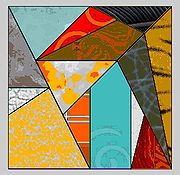
I just heard that later today, all of the data from the
Archimedes Palimpsest Project is being made
freely available online.
I'm particularly interested in Archimedes because of his possible links to the Antikythera mechanism. He lived in Syracuse in the third century BC. That's too early for him to have made the device, which dates from around 100 BC, but he may have been the original inventor of this type of gadget. Ancient texts say he built a bronze model that showed the movements of the Sun, Moon and planets around the Earth. And the month names used on the mechanism's calendar may well have come from Syracuse. More on all this in my book of course!
Anyway, the Archimedes Palimpsest is one of the most important sources of information about the great mathematician's work. A palimpsest is a hidden text, created when Medieval scholars scraped the ink from old parchment so that they could use it again. Luckily for us, traces of the original words often remain. This palimpsest consists of seven of Archimedes' treatises, copied by a scribe in the tenth century, probably in Constantinople, and then written over with a prayer book in the 13th century.
For one of the treatises (On Floating Bodies), this is the only surviving copy in Greek. And for two others (The Method of Mechanical Theorems and the Stomachion) this is the only copy that survives at all.
The palimpsest came to light in 1906 but was then lost for much of the twentieth century. It turned up decades later and was sold at auction for $2.2 million on 29 October 1998, to a mysterious US collector known only as "Mr B". He deposited it at the Walters Art Museum in Baltimore, and has funded a project to conserve the parchment and image the lost writing.
Researchers have made Archimedes' words clear again by taking photos of the pages using lots of different wavelengths, then combining the images on a computer and manipulating them to highlight the Greek text while toning down the top layer of writing. Now, exactly ten years after the palimpsest was sold at auction, they're putting it all online.
Reviel Netz of Stanford University is one of the researchers who has been deciphering the text. He reckons the Method shows that Archimedes was using infinity in his calculations, something that the ancient Greeks weren't thought to have done. Meanwhile the Stomachion is the name of an ancient game in which a square was divided into 14 pieces according to a set pattern (see the pic). The name literally translates as "belly ache", presumably because of its difficulty. It wasn't clear what the game involved, but Netz thinks the idea was to work out how many different ways the 14 pieces could be put back together into a square (17,152 according to modern scholars). If so, it would mean that Archimedes was the founder of the field of combinatorics - the study of numbers of possible combinations.
If you want to know more, Netz, along with curator William Noel, has written a great book about the palimpsest called The Archimedes Codex. They reckon there's still plenty more information to be gleaned from the texts. And now that all the images are freely available, anyone can have a go at reading them.